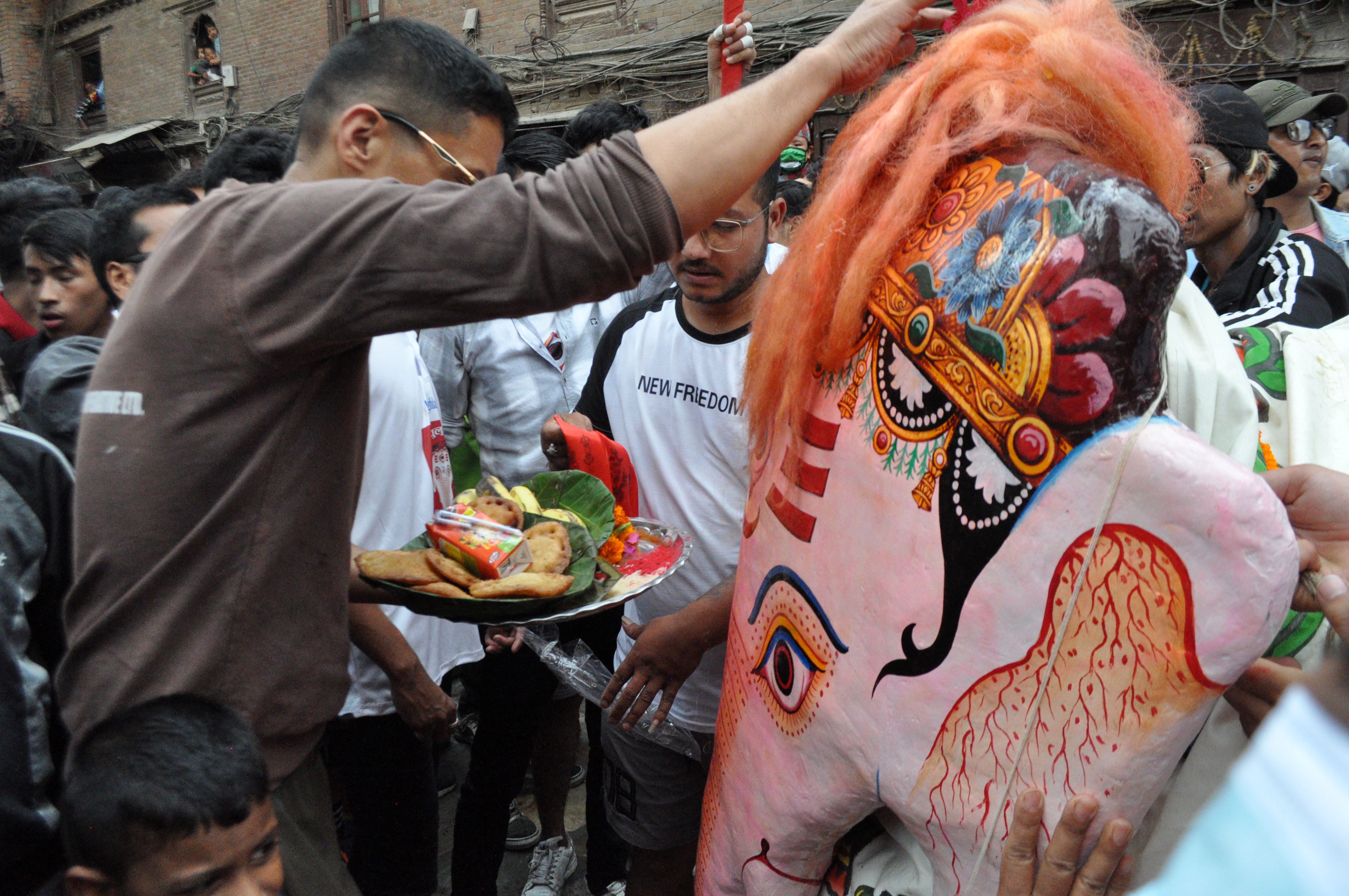
Indra Jatra Festival of Kathmandu
FESTIVAL OF KATHMANDU
-
Experience the vibrant cultural and social festival of Kathmandu. Embrace the ethnic and multicultural heritage of Kathmandu. Enjoy Kathmandu Valley, a UNESCO World Heritage site renowned for its cultural significance. Experience the harmonious blend of Hindu and Buddhist traditions. Witness community collaboration, as people come together to create a grand theatre of celebration featuring music, food, and cultural unity. Join locals in their worship for bountiful harvests and prosperity, and the celebration of reunions of faith and kinship.
In the local language, Ye means "Kathmandu" and Ya means "celebration", meaning "celebration inside Kathmandu".
Indra Jatra - Ye: Ya, Kathmandu's largest religious street festival, is a multifaceted celebration with cultural, spiritual, and social significance. This eight-day festive season begins with the erection of the Ya Sin (long log) and continues with various activities until the Ya Sin is taken down on the eighth day. The streets and temples in the heart of old Kathmandu are adorned with samaya baji, which the locals later consume as a blessing.
According to legend, King of Heaven Indra, disguised as a farmer, came to Kathmandu wrapped in a cloud to collect Parijat (Night jasmine) for his mother, Basundhara, to perform a ritual. Unfortunately, he was caught. Locals tied him up in the town square while his divine elephant searched for him. When Indra's mother descended to Kathmandu and explained, the locals celebrated the king’s visit with songs, dances, feasts, and processions — and from that time on, Kathmandu has celebrated Indra Jatra every year.


-
- The raising of the Lingo (Yosin) symbolises the arrival of Indra and the end of the monsoon
- Chariot Procession of Living Goddess Kumari along with the chariots of Ganesh and Bhairab..
- Masked Dances of Lakhey, Pulu Kisi, and Mahakali Naach bring together entertainment and tantric rituals rooted in devotion.
- Lakhey Dance: A demon dance symbolising the protector of children
- Pulu Kisi (White Elephant): searching for the King of Heaven, whom a Tantrik has bound for ploughing flowers
- Display of Bhairab Masks: Symbolises respect for the protector of the Kathmandu valley.
- Devotion to ancestors and Remembrance of deceased members visit shrines and temples to perform rituals and light butter lamps.
- Swet Bhairab and Akash Bhairab: Fierce forms of Shiva, their masks are revealed only during this festival.
- The special Beer Dispensation from Swet Bhairab
-
The Festive season starts with the erection of the Ya Sin ( long log) and continues with different activities till the Ya Sin is taken down on the 8th day of the festival.
Day 1: Arrival
Day 2: First day of Indra Jatra: The festive season starts with the erection of the Ya Sin (long log) flagpole.
In the 10th century, King Gunakamadeva started the Indra Jatra to commemorate the founding of Kathmandu city. The erection of the Ya Sin (flagpole) took place on the first day of the 11th month of Nepal Samabat.
On the first day, locals visit shrines along the periphery of the historic part of the city, holding lighted incense to honour deceased family members. They also place small butter lamps along the way. This process is known as Upāku Wanegu.
Day 3: Kathmandu sightseeing
We will explore Kathmandu valley (a world heritage site of Cultural importance)
Day 4: Indra Jatra
In the morning, we will visit Kathmandu for sightseeing
Day 5: Upper part of Kathmandu (less crowded)
Day 6: Drive to Chitwan
Day 7: Chitwan
Day 8: Back to Kathmandu in the evening, observing the last day of Indra Jatra
Day 9: Departure
-
Every year Ye: ya is celebrated in September ( Date varies according to the Lunar calendar). Each year our program starts 2 days before the main day of the festival, I.e Indra Jatra and goes till the end of Ye: Ya.
This eight-day-long festival is celebrated to fanfare, with a chariot procession of the living goddess Kumari, Ganesh, and Bairav, the masked dance of deities and demons, displaying sacred images and representations in honour of the god Indra, king of heaven. It is believed that from then on, gentle morning mist would blanket the Kathmandu Valley during the autumn and winter months to ripen the harvest. With such blessing and protection, Kathmandu had thrived. In these 8 days, different functions and processions are carried out throughout the day. For more, make time to explore Kathmandu in a festive mood. This festival is celebrated after the monsoon, which is the right time to explore Kathmandu.